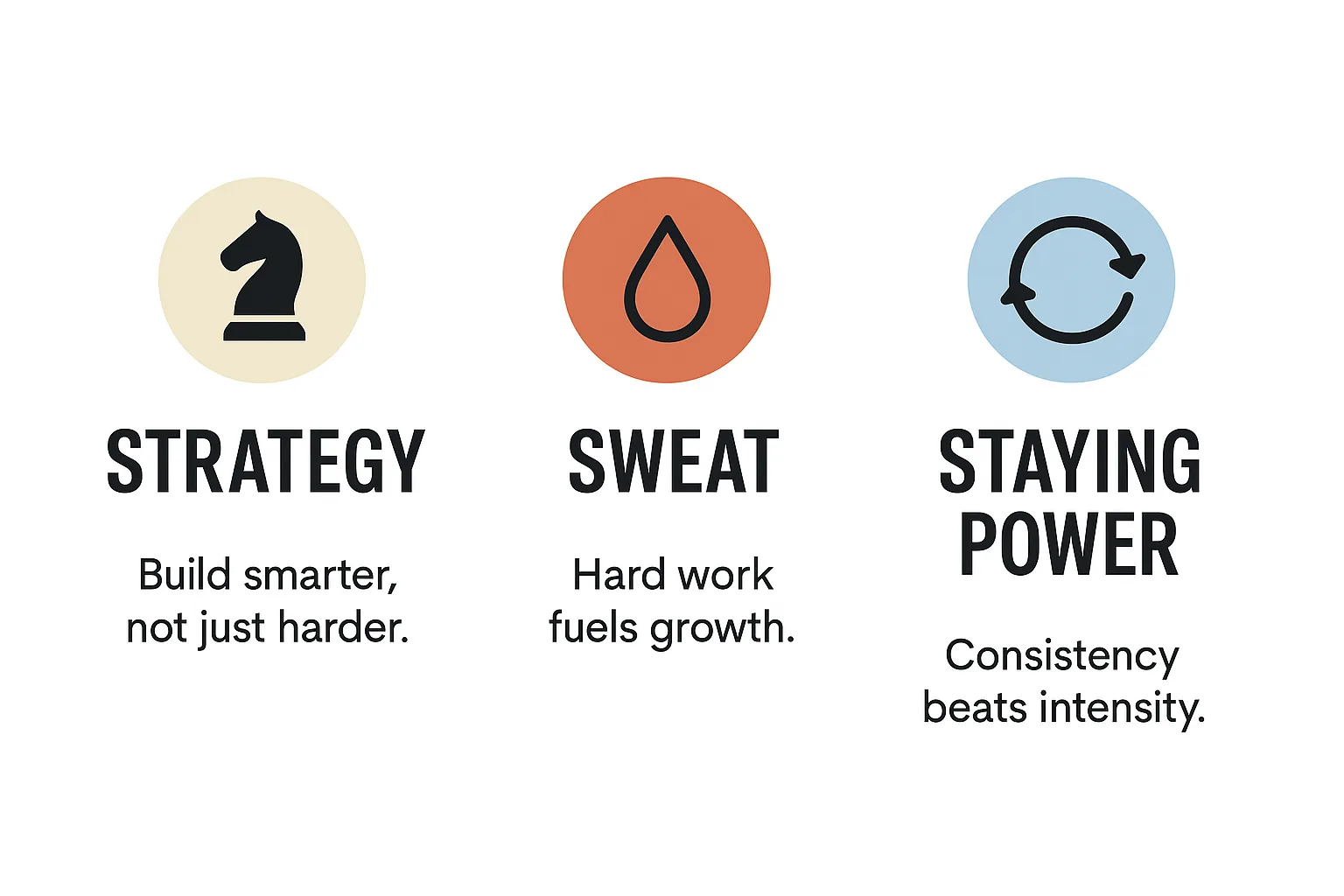The Executive Edge: Free Business Resources and Tools for Leaders and Operations



The Executive Edge: Your playbook for success.

Building a business is equal parts strategy, sweat, and staying power. Whether you’re scaling your first team, navigating operational chaos, or refining your sales engine—having the right tools can make all the difference.
The Executive Edge is your curated library of free business resources, tools, strategic guides, and plug-and-play templates designed for founders, COOs, and leaders who need to move fast—and move smart. Each resource is built from real-world experience supporting growing companies across industries.
Use them to make better decisions, streamline operations, and scale with confidence.
Real-World Challenge: From Chaos to Clarity
Take the founder of a fast-growing service company. The team doubled in size in six months—but the systems didn’t. They were buried in approvals, their sales team was stepping on each other’s deals, and no one knew who owned what. Every day felt like triage.
Using support tools like the Scalable Org Chart Template and Leadership Sync Playbook inside The Executive Edge, they made small—but strategic—changes. Roles got clarified. Meetings gained structure. The week stopped being a fire drill, and the team started running like a company instead of a scramble.
The Three Pillars
Strategy
Build smarter, not just harder.
The most successful founders don’t just hustle—they execute on a plan. Strategy gives shape to your ambition. It’s what turns vague ideas into scalable systems. Whether you’re crafting a go-to-market motion, defining operational KPIs, or building your first team structure, the right strategic frameworks multiply your efforts.
According to research by Harvard Business Review, 67% of well-formulated strategies fail due to poor execution—not poor ideas. That’s why we provide tools that bridge the gap between strategy and implementation.
Source: Harvard Business Review – Why Strategy Execution Unravels
Sweat
Nothing replaces hard work—but smart work scales.
Every successful business has a chapter nobody sees—the late nights, the messy pivots, the relentless grind. This is sweat equity: the investment of time, talent, and personal risk. We’ve lived that. The Executive Edge was built to reduce the friction of growth, so you can direct your sweat where it counts.
Studies show that founders who contribute sweat equity—especially in the earliest stages—are more likely to secure funding and sustain long-term growth.
Source: Journal of Business Venturing – Sweat Equity and Entrepreneurial Performance

Staying Power
Consistency beats intensity.
Scaling isn’t a sprint—it’s a compounding game. Staying power is your ability to weather the pivots, downturns, and plateaus. It’s not just about resilience, it’s about creating systems that keep delivering even when you step away.
McKinsey research shows that companies that maintain operational discipline and strategic agility through uncertainty outperform their peers by 30% over a 10-year period.
The Executive Edge helps you build that kind of muscle—tools that work now, and systems that last.
Source: McKinsey – Agility and Resilience in Times of Uncertainty
Free Business Resources For Your Success

Building a Scalable Org Chart
Clarify roles. Eliminate confusion. This guide helps you design an org chart that grows with your business—without turning into chaos.

How to Run a Weekly Leadership Sync
No more status updates disguised as meetings. Learn how to structure leadership syncs that drive alignment, action, and accountability.

AI Playbook for Small Business
Implement AI—starting small, moving smart, and keeping your team in the loop. Cut busywork, boost productivity, and build a competitive edge with tools that fit your business..
Built on Real Challenges. Expanded by Real Solutions.
The Executive Edge isn’t static—it grows with you.
Each guide, template, and resource in this library was born from an actual business challenge faced by one of our clients. When a founder asks, “How do I delegate without losing control?” or a COO says, “We’re growing too fast for our systems,”—we don’t just answer. We build a playbook.
That means what you see today is only the beginning.
As we partner with more businesses, solve more problems, and refine more systems, we’ll continue adding new tools. If you’re struggling with something, chances are someone else is too—and your challenge might shape the next guide we publish.
We treat every resource as a living document. As best practices evolve, so will our playbooks.
Have a challenge you’d like solved?
Reach out. The next playbook might have your name on it.

Playbook Request
Frequently asked questions

How do I determine my break even point?
Your break-even point is the moment your total revenue equals your total costs—no profit, no loss. It’s one of the most important metrics for business planning.
To calculate it, use this formula:
Break-even point (in sales dollars) = Fixed Costs ÷ Contribution Margin Ratio
Where:
-
Fixed Costs = costs that don’t change with sales (e.g., rent, salaries)
-
Contribution Margin = sales price – variable costs per unit
-
Contribution Margin Ratio = Contribution Margin ÷ Sales Price
Example:
You have $10,000 in fixed monthly costs.
Your service sells for $1,000 with $400 in variable costs.
Contribution Margin = $600 → Contribution Margin Ratio = 60%
Break-even = $10,000 ÷ 0.6 = $16,667 in sales/month
Need help calculating yours? We can walk through it together in your strategy call.
Can AI really help a small company—or is it just hype?
Yes, AI can be a game-changer—even for small teams. Think less “robots taking over” and more “supercharged assistant.” From automating follow-ups and forecasting cash flow to generating content and summarizing customer feedback, AI helps founders do more with less. The key is starting small—plug it into one painful process, measure impact, then scale usage.
I’m overwhelmed—how do I delegate without losing visibility?
Delegation doesn’t mean detachment. Create clear decision rights, regular check-ins, and KPIs for ownership. Delegating with structure actually increases your visibility into what matters most.
What’s the biggest mistake leaders make in HR as they grow?
They hire for today’s needs, not tomorrow’s scale. Build a culture-backed hiring framework that prioritizes adaptability, not just credentials. And don’t delay that first real HR hire—they’re your internal architect.
How should I structure an equity infusion without losing control?
Protecting your vision starts with clear terms. Whether it’s a SAFE, convertible note, or direct equity, align capital with milestones—and build in mechanisms that preserve operational control while signaling investor confidence.
How do we adapt to market changes without overreacting?
Use a 3-tier framework: monitor signals (data + frontline insight), evaluate impact scenarios, and align responses with long-term goals. Reaction is emotional; adaptation is operational.
Can a fractional team really change our trajectory?
Yes—if they’ve lived it. We’ve helped founders streamline chaos, build clarity, and unlock growth. The key is plugging into your leadership rhythm without adding drag.
How do I deal with late Accounts Receivable (AR) without damaging relationships?
Start by tightening your process, not just chasing payments. Implement clear payment terms upfront, automate reminders, and offer early-pay incentives. For chronic delays, segment customers by risk and prioritize follow-up accordingly. And if it’s systemic, you likely have a sales-to-cash misalignment—fix the root, not just the symptom.

